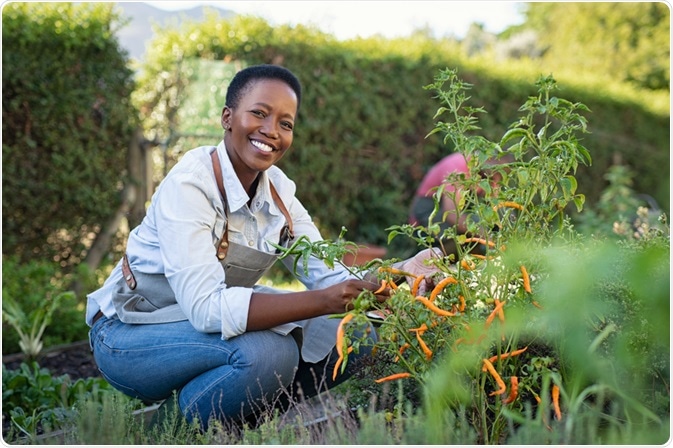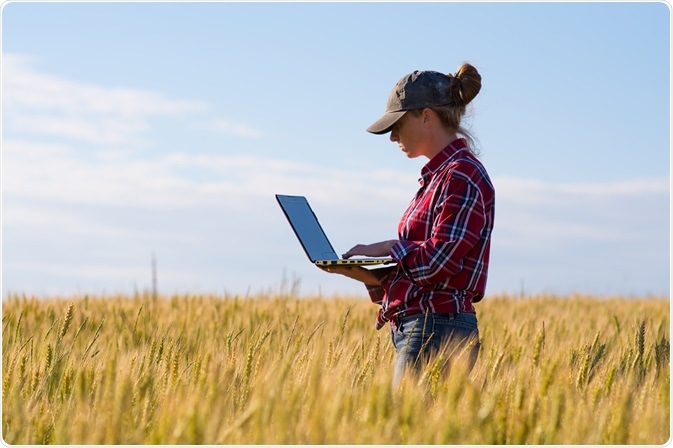Women account for roughly 43% of the global agricultural labor force and 47% of the world’s fisheries labor force. According to the U.N. Food and Agriculture Organization (FAO), while these women make up less than half of the world’s food agriculture and fisheries workforce, they are responsible for producing over half of the world’s food sources.

Image Credit: Rido/Shutterstock.com
Women are incredibly important to ensuring the global food supply. Statistics show they work longer hours than men in the same roles and produce more food. However, women in agriculture face numerous challenges, such as gender equality issues.
In general, women face a lack of access to sources such as agricultural training and education, equal treatment, farming land, financing, markets, and suitable working conditions. Here, we discuss the role women play in agriculture and review the challenges they face.
Access to land
One of the biggest challenges women in agriculture face is access to land. In developing countries, statistics reveal that while women may be doing the majority of the work, with as many as 60-80% of the food production workforce being women, a meager 10-20% of landholders are women.
What is even more concerning is that in some parts of the world, it is not legal for women to own or control land. This is a huge problem because if women cannot control the land they work they are unable to make decisions about the agricultural process. Therefore, they are powerless to make farming agreements that would be prosperous to them and secure more reliable sources of income.
Access to education
Women face a lack of agricultural training and education. Studies have shown that men in the same industry have greater educational opportunities, putting women at an unfair disadvantage.
Because of a lack of access to appropriate education, female farmers are less aware of the developments in agricultural technology, such as how to acquire new and better equipment, developments in seed varietals and animal breeds, advances in measures of pest control, and new management techniques.
Giving women access to the same educational opportunities as men could increase food production by women by 30%. As a result, the hunger of 150 million people could potentially be eradicated.
Access to finances
Significant gender differences exist in terms of access to agricultural financing. Research shows that 36% of women working in agriculture around the world have less access to financing than men in the same position. Additionally, because of legal and cultural barriers, women cannot get loans at all or are only offered smaller loans than would be granted to men for the same purposes.
Gender inequality prevents sustainable agricultural development
Gender inequalities in agriculture prevent the development of sustainable agricultural practices across multiple dimensions. While women hold vital roles in household food security, they are subject to discrimination and are presented with fewer opportunities than men in the same roles.
The patriarchal norms that remain in place create numerous disadvantages for women in agriculture: they have fewer rights, reduced access to finance, face unpaid work and insecure employment, and are excluded from the decision-making process.
Overall, women in agriculture are more likely to work in part-time or seasonal positions that are lower paid even though they tend to be more qualified than their male counterparts. Domestic roles often exacerbate this problem, with many women not being paid for work as it is considered to be a domestic chore rather than a job.

Image Credit: Denis Klimov 3000/Shutterstock.com
Addressing gender inequality in agriculture to tackle the hunger crisis
Gender inequalities in agriculture exacerbate the hunger crisis. Because of these inequalities, the amount of food being produced is limited, and women are particularly at risk of hunger from lack of food resources.
Women suffer more than men from macro- and micronutrient deficiencies that can have a particularly detrimental impact on the health of their children. Thus there is a long-term negative impact on the community in which they live.
Additionally, women, more than men, absorb the impact of hardships to protect others, they reduce their own food intake to feed their families, they risk collecting wild food, sell their belongings and are more likely to take on risky jobs.
The hunger crisis could be helped, at least in part, by giving women in agriculture the same opportunities as men. Research indicates that if women in agriculture were to have the same access to resources as men, it could potentially pull 150 million people out of poverty.
Experts emphasize that women need to be a priority in this sector. Currently, there are a number of tools and initiatives that are acting to help close the gender gap in agriculture and secure a better future for the communities affected.
It is generally agreed that the most important primary step is to strengthen land tenure rights for women, a factor that is critical to giving women control over their livelihoods and empowering them to make impactful changes.
Further Reading
Last Updated: Dec 14, 2021